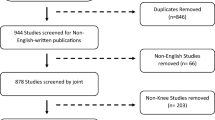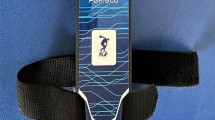Abstract
Introduction
Medial knee instability is a key clinical parameter for assessing ligament injury and arthroplasty success, but current methods for measuring stability are typically either qualitative or involve ionizing radiation. The purpose of this study was to perform a preliminary analysis of whether ultrasound (US) could be used as an alternate approach for quantifying medial instability by comparing an US method with an approach mimicking the current gold standard fluoroscopy method.
Materials and methods
US data from the medial knee were collected, while cadaveric lower limbs (n = 8) were loaded in valgus (10 Nm). During post-processing, the US gap width was measured by identifying the medial edges of the femur and tibia and computing the gap width between these points. For comparison, mimicked fluoroscopy (mFluoro) images were created from specimen-specific bone models, developed from segmented CT scans, and from kinematic data collected during testing. Then, gap width was measured in the mFluoro images based on two different published approaches with gap width measured either at the most medial or at the most distal aspect of the femur.
Results
Gap width increased significantly with loading (p < 0.001), and there were no significant differences between the US method (unloaded: 8.7 ± 2.4 mm, loaded: 10.7 ± 2.2 mm) and the mFluoro method that measured gap width at the medial femur. In terms of the change in gap width with load, no correlation with the change in abduction angle was observed, with no correlation between the various methods. Inter-rater reliability for the US method was high (0.899–0.952).
Conclusions
Ultrasound shows promise as a suitable alternative for quantifying medial instability without radiation exposure. However, the outstanding limitations of existing approaches and lack of true ground-truth data require that further validation work is necessary to better understand the clinical viability of an US approach for measuring medial knee gap width.



Similar content being viewed by others
References
Robinson JR, Bull AMJ, Thomas RRD, Amis AA (2006) The role of the medial collateral ligament and posteromedial capsule in controlling knee laxity. Am J Sports Med 34:1815–1823. doi:10.1177/0363546506289433
Butler DL, Noyes FR, Grood ES (1980) Ligamentous restraints to anterior-posterior drawer in the human knee. A biomechanical study. J Bone Jt Surg Am 62:259–270
Sullivan D, Levy IM, Sheskier S et al (1984) Medical restraints to anterior-posterior motion of the knee. J Bone Jt Surg 66:930–936
Sakane M, Livesay GA, Fox RJ et al (1999) Relative contribution of the ACL, MCL, and bony contact to the anterior stability of the knee. Knee Surg Sport Traumatol Arthrosc 7:93–97. doi:10.1007/s001670050128
Athwal KK, Hunt NC, Davies AJ et al (2014) Clinical biomechanics of instability related to total knee arthroplasty. Clin Biomech 29:119–128. doi:10.1016/j.clinbiomech.2013.11.004
Fehring TK, Odum S, Griffin WL et al (2001) Early failures in total knee arthroplasty. Clin Orthop Relat Res 392:315–318
Sharkey PF, Hozack WJ, Rothman RH et al (2002) Why are total knee arthroplasties failing today? Clin Orthop Relat Res 404:7–13
Mulhall KJ, Ghomrawi HM, Scully S et al (2006) Current etiologies and modes of failure in total knee arthroplasty revision. Clin Orthop Relat Res 446:45–50. doi:10.1097/01.blo.0000214421.21712.62
Schroer WC, Berend KR, Lombardi AV et al (2013) Why are total knees failing today? Etiology of total knee revision in 2010 and 2011. J Arthroplast 28:116–119. doi:10.1016/j.arth.2013.04.056
Sharkey PF, Lichstein PM, Shen C et al (2014) Why are total knee arthroplasties failing today—has anything changed after 10 years? J Arthroplast 29:1774–1778. doi:10.1016/j.arth.2013.07.024
Kuster MS, Bitschnau B, Votruba T (2004) Influence of collateral ligament laxity on patient satisfaction after total knee arthroplasty: a comparative bilateral study. Arch Orthop Trauma Surg 124:415–417. doi:10.1007/s00402-004-0700-7
Bollen S (2000) Epidemiology of knee injuries: diagnosis and triage. Br J Sports Med 34:227–228. doi:10.1136/bjsm.34.3.227-a
Ogawa H, Matsumoto K, Ogawa T et al (2016) Preoperative varus laxity correlates with overcorrection in medial opening wedge high tibial osteotomy. Arch Orthop Trauma Surg 136:1337–1342. doi:10.1007/s00402-016-2521-x
Wijdicks CA, Griffith CJ, Johansen S et al (2010) Injuries to the medial collateral ligament and associated medial structures of the knee. J Bone Jt Surg 92:1266–1280
Hefti E, Müller W, Jakob RP, Stäubli H-U (1993) Evaluation of knee ligament injuries with the IKDC form. Knee Surgery Sport Traumatol Arthrosc 1:226–234. doi:10.1007/BF01560215
Clarke JV, Wilson WT, Wearing SC et al (2012) Standardising the clinical assessment of coronal knee laxity. Proc Inst Mech Eng H 226:699–708
Noyes FR, Grood ES, Butler DL, Raterman L (1980) Knee ligament tests: what do they really mean? Phys Ther 60(12):1578–1581
Landis JR, Koch GG (1977) The measurement of observer agreement for categorical data. Biometrics 33:159. doi:10.2307/2529310
Cushnaghan J, Cooper C, Dieppe P et al (1990) Clinical assessment of osteoarthritis of the knee. Ann Rheum Dis 49:768–770. doi:10.1136/ARD.49.10.768
Stähelin T, Kessler O, Pfirrmann C et al (2003) Fluoroscopically assisted stress radiography for varus-valgus stability assessment in flexion after total knee arthroplasty. J Arthroplast 18:513–515. doi:10.1016/S0883-5403(03)00060-3
ten Ham AM, Heesterbeek PJC, van der Schaaf DB et al (2013) Flexion and extension laxity after medial, mobile-bearing unicompartmental knee arthroplasty: a comparison between a spacer- and a tension-guided technique. Knee Surg Sport Traumatol Arthrosc 21:2447–2452. doi:10.1007/s00167-012-2021-7
Heesterbeek PJC, Verdonschot N, Wymenga AB (2008) In vivo knee laxity in flexion and extension: a radiographic study in 30 older healthy subjects. Knee 15:45–49. doi:10.1016/j.knee.2007.09.007
Tsukeoka T, Tsuneizumi Y (2016) Varus and valgus stress tests after total knee arthroplasty with and without anesthesia. Arch Orthop Trauma Surg 136:407–411. doi:10.1007/s00402-015-2405-5
Laprade RF, Bernhardson AS, Griffith CJ et al (2010) Correlation of valgus stress radiographs with medial knee ligament injuries: an in vitro biomechanical study. Am J Sports Med 38:330–338. doi:10.1177/0363546509349347
Whelan D, Leiter J, Sasyniuk T et al (2015) Double-row repair of the distal attachment of the superficial medial collateral ligament: a basic science pilot study. Knee Surg Sport Traumatol Arthrosc 23:2820–2824. doi:10.1007/s00167-015-3773-7
Sawant M, Narasimha Murty A, Ireland J (2004) Valgus knee injuries: evaluation and documentation using a simple technique of stress radiography. Knee 11:25–28. doi:10.1016/S0968-0160(03)00009-7
LaPrade RF, Heikes C, Bakker AJ, Jakobsen RB (2008) The reproducibility and repeatability of varus stress radiographs in the assessment of isolated fibular collateral ligament and grade-iii posterolateral knee injuries. J Bone Jt Surg 90:2069–2076
Brenner DJ, Doll R, Goodhead DT et al (2003) Cancer risks attributable to low doses of ionizing radiation: assessing what we really know. Proc Natl Acad Sci USA 100:13761–13766. doi:10.1073/pnas.2235592100
Giordano BD, Grauer JN, Miller CP et al (2011) Radiation exposure issues in orthopaedics. J Bone Jt Surg 93:e69-1–e69-10
Bhargavan M (2008) Trends in the utilization of medical procedures that use ionizing radiation. Health Phys 95:612–627. doi:10.1097/01.HP.0000327659.42618.c1
Siu D, Cooke TD, Broekhoven LD et al (1991) A standardized technique for lower limb radiography. Practice, applications, and error analysis. Investig Radiol 26:71–77
Krackow KA, Pepe CL, Galloway EJ (1990) A mathematical analysis of the effect flexion and rotation on apparent varus/valgus alignment at the knee. Orthopedics 13:861–868. doi:10.3928/0147-7447-19900801-09
Kleinbaum Y, Blankstein A (2008) Mild to moderate medial collateral ligament (MCL) injuries of the knee: sonographic findings and sonographic valgus stress test. J Musculoskelet Res 11:9–14. doi:10.1142/S0218957708001912
Victor J, Van Glabbeek F, Vander Sloten J et al (2009) An experimental model for kinematic analysis of the knee. J Bone Jt Surg 91:150–163
Miranda DL, Rainbow MJ, Leventhal EL et al (2010) Automatic determination of anatomical coordinate systems for three-dimensional bone models of the isolated human knee. J Biomech 43:1623–1626. doi:10.1016/j.jbiomech.2010.01.036
Aronson PA, Gieck JH, Hertel J et al (2010) Tibiofemoral joint positioning for the valgus stress test. J Athl Train 45:357–363. doi:10.4085/1062-6050-45.4.357
Shultz SJ, Shimokochi Y, Nguyen A-D et al (2007) Measurement of varus–valgus and internal–external rotational knee laxities in vivo—part I: assessment of measurement reliability and bilateral asymmetry. J Orthop Res 25:981–988. doi:10.1002/jor.20397
Grood ES, Suntay WJ (1983) A joint coordinate system for the clinical description of three-dimensional motions: application to the knee. J Biomech Eng 105:136–144. doi:10.1115/1.3138397
Nunnally JC (1978) Psychometric theory, 2nd edn. McGraw-Hill, New York
Myrer JW, Schulthies SS, Fellingham GW (1996) Relative and absolute reliability of the KT-2000 arthrometer for uninjured knees. Testing at 67, 89, 134, and 178 N and manual maximum forces. Am J Sports Med 24:104–108. doi:10.1177/036354659602400119
Sofka CM, Adler RS, Laskin R (2003) Sonography of polyethylene liners used in total knee arthroplasty. Am J Roentgenol 180:1437–1441. doi:10.2214/ajr.180.5.1801437
Grood ES, Noyes FR, Butler DL, Suntay WJ (1981) Ligamentous and capsular restraints preventing straight medial and lateral laxity in intact human cadaver knees. J Bone Jt Surg Am 63:1257–1269
Seering WP, Piziali RL, Nagel DA, Schurman DJ (1980) The function of the primary ligaments of the knee in varus-valgus and axial rotation. J Biomech 13:785–794. doi:10.1016/0021-9290(80)90240-7
Fishkin Z, Miller D, Ritter C, Ziv I (2002) Changes in human knee ligament stiffness secondary to osteoarthritis. J Orthop Res 20:204–207. doi:10.1016/S0736-0266(01)00087-0
Delport H, Labey L, De Corte R et al (2013) Collateral ligament strains during knee joint laxity evaluation before and after TKA. Clin Biomech 28:777–782. doi:10.1016/j.clinbiomech.2013.06.006
Woo SL-Y, Orlando CA, Gomez MA et al (1986) Tensile properties of the medial collateral ligament as a function of age. J Orthop Res 4:133–141. doi:10.1002/jor.1100040201
Gijssen Y, Sierevelt IN, Kooloos JGM, Blankevoort L (2004) Stiffness of the healing medial collateral ligament of the mouse. Connect Tissue Res 45:190–195. doi:10.1080/03008200490514158
Malanga GA, Andrus S, Nadler SF, McLean J (2003) Physical examination of the knee: a review of the original test description and scientific validity of common orthopedic tests. Arch Phys Med Rehabil 84:592–603. doi:10.1053/apmr.2003.50026
Acknowledgements
The authors gratefully acknowledge funding from the National Institute of Arthritis and Musculoskeletal Skin Diseases (F32 AR069459), the contributions of Félix Dandois, Darryl Thelen, Michael Vignos, and the support of the Vesalius Institute including Goedele Liégeois, Kristof Reyniers, and Jo Verbinnen.
Author information
Authors and Affiliations
Corresponding author
Ethics declarations
Conflict of interest
The authors declare that they have no conflict of interest.
Ethical approval
All procedures performed in studies involving human participants were in accordance with the ethical standards of the institutional and/or national research committee and with the 1964 Helsinki declaration and its later amendments or comparable ethical standards.
Rights and permissions
About this article
Cite this article
Slane, L.C., Slane, J.A. & Scheys, L. The measurement of medial knee gap width using ultrasound. Arch Orthop Trauma Surg 137, 1121–1128 (2017). https://doi.org/10.1007/s00402-017-2740-9
Received:
Published:
Issue Date:
DOI: https://doi.org/10.1007/s00402-017-2740-9




